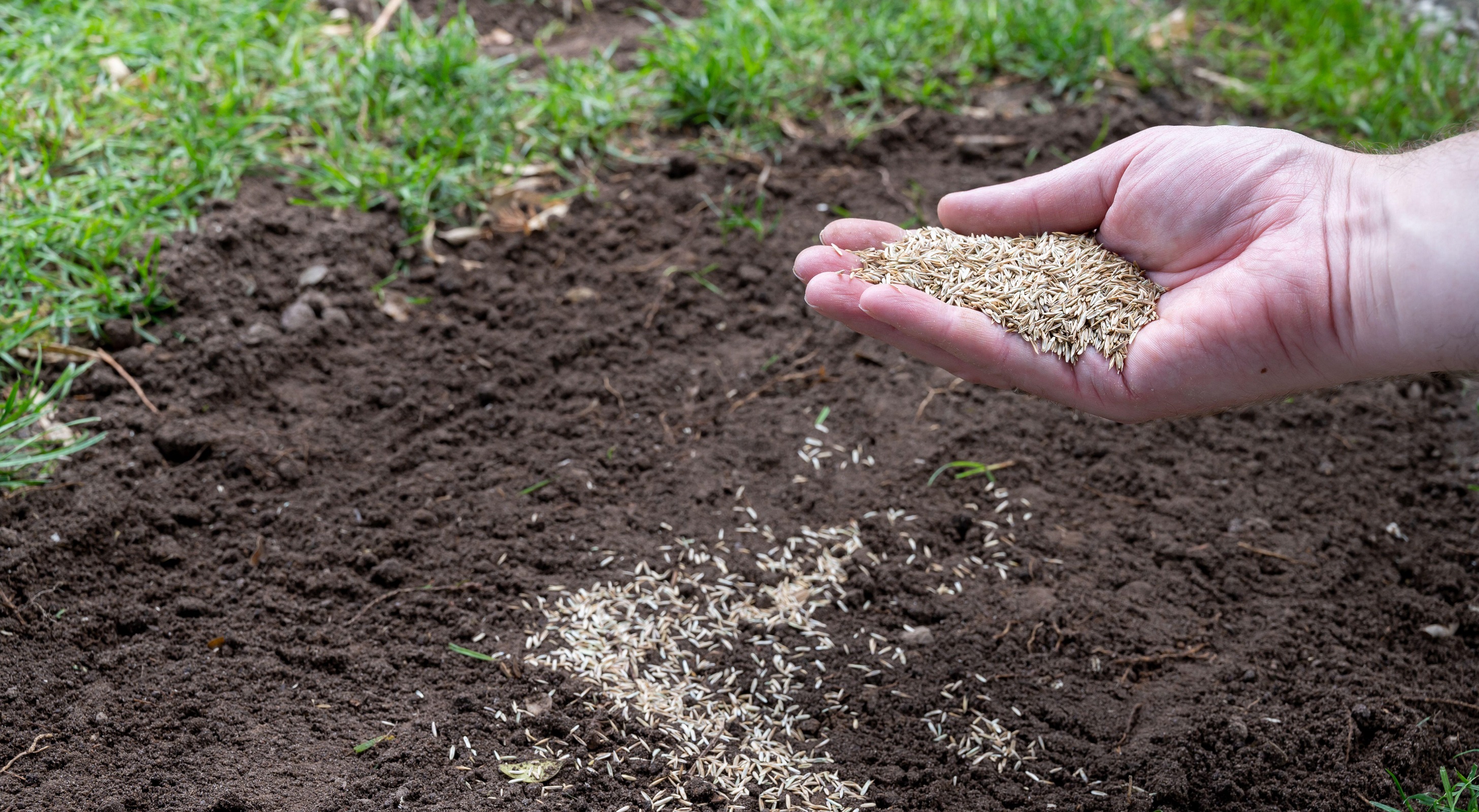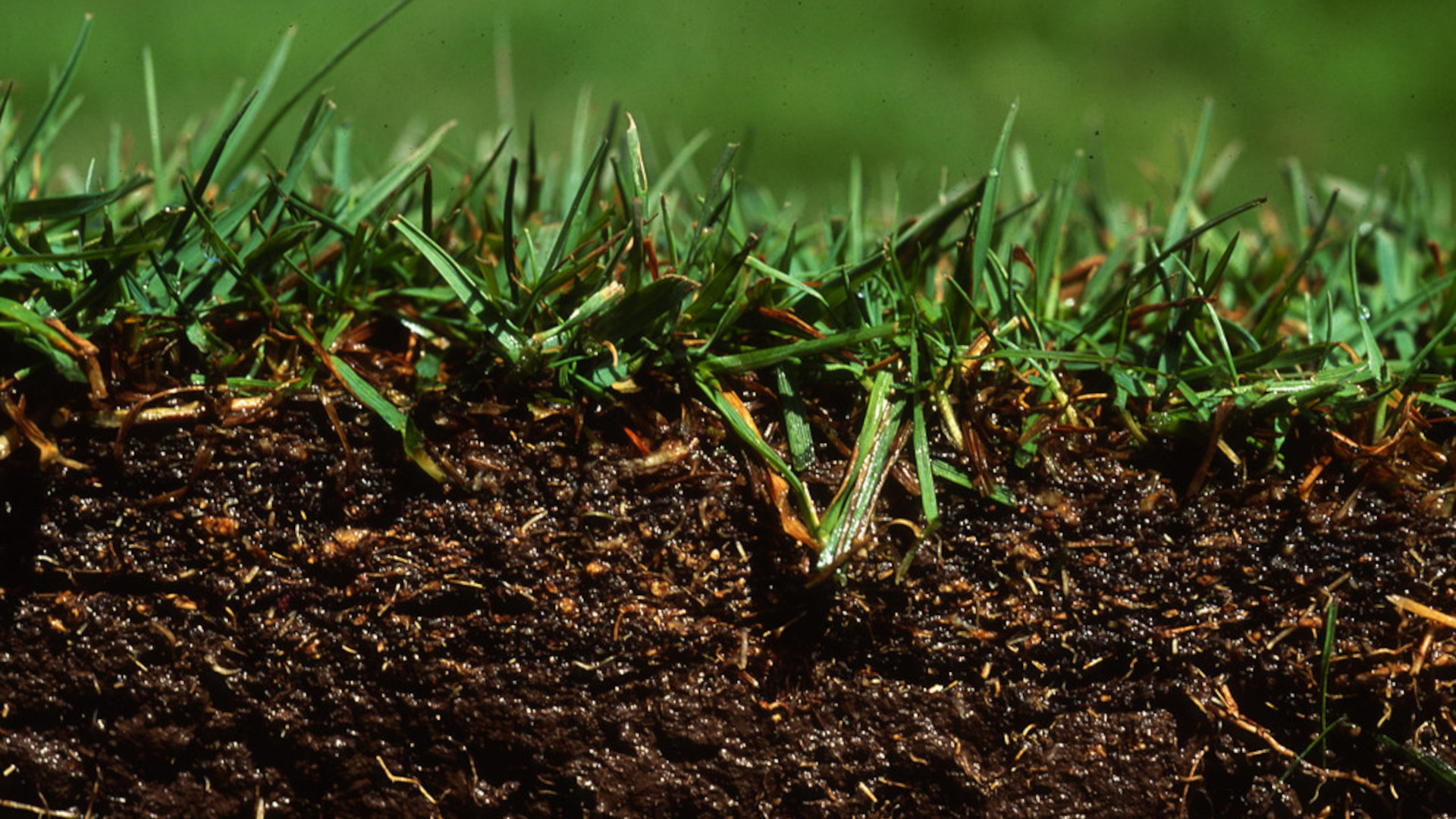
Know when to sow grass seed and you may just find it makes the task of creating and maintaining a better lawn that much easier. If you're sowing a new lawn from scratch, or sowing fresh grass seed to fix patchy grass, mastering the process of sowing your lawn is only going to make for a greener, healthier and stronger lawn.
If you've been looking into how to overseed a lawn then wait up: you'll need to know how to sow grass seed first. There a few crucial factors to consider such as the time of year, climate zone and the type of grass, so it's really not as straight forward as it may first appear.
Lawn experts share everything that you need to know about when the optimum time is to sow grass seed.
When to sow grass seed
"When it comes to sowing grass seed, timing is crucial for optimal growth and establishment. The best time to sow grass seed largely depends on the climate zone and the type of grass." says Gene Caballero, co-founder of GreenPal and a professional with over 25 years of experience in the landscaping industry.
Gene Caballero explains; "In cooler northern climates, late summer to early fall is often the ideal time. This period allows the grass seed to benefit from the still-warm soil temperatures, which encourage germination, while cooler air temperatures reduce the likelihood of disease. The fall also typically has more consistent moisture levels, which help the grass seed to establish before the onset of winter. Planting in this window ensures that the grass is strong enough to survive the winter and thrive in spring.
"In warmer southern climates, late spring to early summer is generally the best time to sow grass seed, particularly for warm-season grasses. The soil temperature is adequately warm for germination, and the longer daylight hours promote strong growth. This timing also gives the grass a chance to become well-established before the heat and potential drought conditions of high summer."

With the priority to pick the right time of year when conditions are naturally as close to perfect as possible – rather than doing it outside that window and having to work harder to achieve that state, we should be aiming for sowing grass between the months of March and October.
Adam Woolcott points out that, "if sown (grass seed) when the ground is very cold, in mid-winter for example, then there's a risk the seed will rot before it can germinate."
The ideal times will mean there is enough moisture to feed the seeds through the well-watered soil. It should also mean it is warm enough to offer a constant soil temperature that allows for seed germination. This is generally more than 46°F, which means – as a guide – the air temperature will need to average over 50°F across 24 hours to sow a cool season grass seed.
It is possible to get specific seed that can work in colder climates, or withstand drier areas. It's always good to know when the best time is to sow these particular grasses.
Santiago Flores, founder of KY Tree Care, says: "The optimal time for sowing grass seed primarily depends on the type of grass and local climate. For example, cool-season grasses, such as Kentucky bluegrass, fescue, and ryegrass, are best sown in early fall. This timing allows the grass to establish before winter and then take advantage of spring's moist conditions for optimal growth."
Other cool-season grasses include fine fescue and tall fescue. These seeds can be mixed together for different needs and uses such as sunny spots or heavy foot traffic.
"For warm-season grasses like Bermuda, Zoysia, and St. Augustine, which thrive in hotter climates, late spring or early summer is ideal. This ensures the soil is sufficiently warm for germination and the weather provides adequate sunlight and warmth for the grass's development." explains Santiago.This type of grass prefers a minimum temperature of 65°F - 70°F.
For warm-season lawns it's advised to stop mowing your lawn in October, and restart the lawn mower in April or May, to maintain a healthy regrowth.
What month is best for sowing grass seed?
In cooler northern climates late summer to early fall is often the ideal time, whereas in warmer southern climates late spring to early summer is generally the best time to sow grass seed.
It's likely that you'll be opening your seeds up to competition from the local flora and fauna, though, so ensure that any weeds have been removed at the root and be sure to protect the seed from birds by using a seed protection matt such as the Scotts Grass Seed Protection Matt with 12 Stakes which is $24.99 on Amazon.
Adam says: "If you decided to sow grass seed in the autumn then consider falling leaves if there's trees nearby, as newly emerging grass seed will not tolerate being smothered with leaves."
What is the best way to put down grass seed?
You'll need to ensure that the seedbed is well-prepared, free of weeds, and properly fertilized to give the grass the best start possible.
For this reason the right time of year is very important. If you're sowing in colder times then you'll want to be sure the soil is well loosened so it can breath. That can mean breaking up compacted soil by digging it or rotavating it first. Check out our how to till a garden guide to do this best. Just be sure to leave for several days after digging, treading it down and raking it, so it can settle first before you seed.
If the soil is light and fast draining then you'll want to add in some well-rotted manure to ensure the soil can hold moisture. If you have any home made compost this can be an excellent addition to your soil mix.
It's worth trying to improve your lawn area's pH balance to ensure the soil is at its best. Check the pH levels of your soil using a soil meter, like this 7-in-1 soil test kit we've found, and make adjustments to the soil necessary.
A pH of 6-7 is best for cool-season grasses, while warm-season grasses sometimes like a slightly more acidic soil, with a pH around 5.5-6.5. You can raise the soil’s pH by adding lime - like this on Amazon - (the mineral), or lower it by adding this Sulphur from Amazon.
Once your sowing site is all prepared with the soil in its ideal state you'll want to weigh out the right quantity of seed – which should be shown on the packet. So make sure you know the size of the area you wish to cover. Then divide the seed into two equal batches.
Now you'll want to sow half the seeds walking up and down horizontally, then repeat this vertically with the other half. You can do this by hand but for the most even cover a seed spreader is recommended like this Scotts Turf Builder EdgeGuard Mini Broadcast Spreader on Amazon.
Lightly rake over the area sown. If there's no rain, don’t forget the importance of regular watering and maintenance to encourage healthy growth after sowing.
How long after planting grass seed can you walk on it?
Grass should start to appear between a week and ten days after you've sown them. To keep this growth going the most important task is to keep the soil moist by watering regularly.
Once the seedlings hit about three to five inches in height, re-firm the soil using a light roller or gently treading any raised areas. Then, two or three days later, give the grass a cut – taking off about a third of its height. If you're using a mower with a roller, it's worth removing this first to ensure you don't crush the grass.







